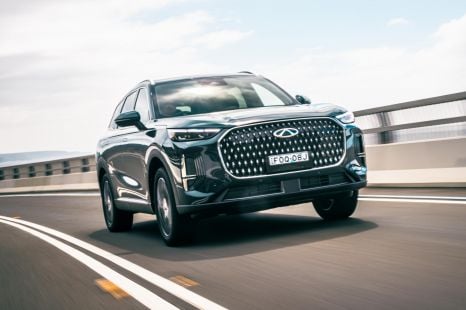

Andrew Maclean
2026 Chery Tiggo 9 review: Quick drive
57 Minutes Ago
The Kia Stinger 330S deserves to sell a lot better than it does. What else has hatchback versatility, excellent handling and twin-turbo V6 grunt for just over $50k?
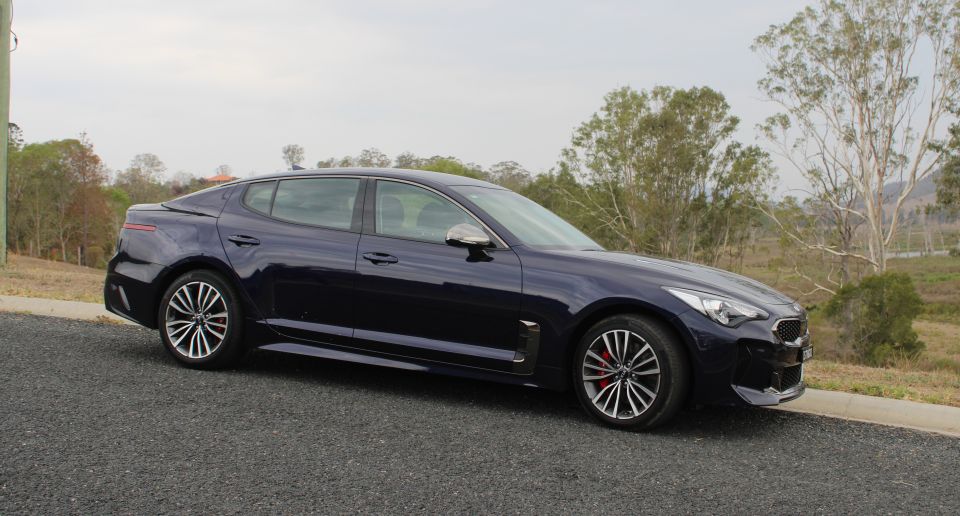
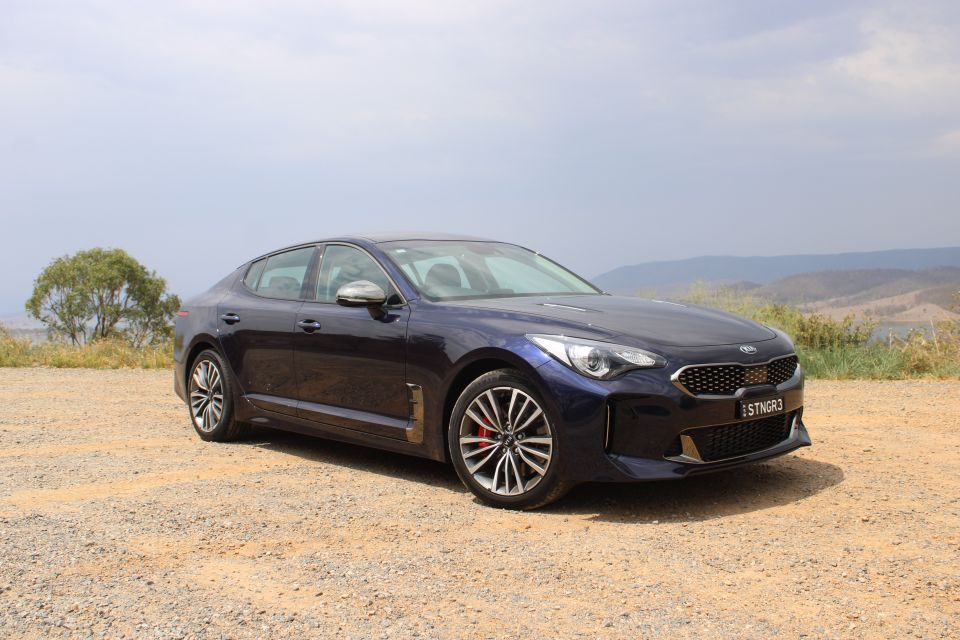

News Editor
New from
$47,190
excl. on-roads

News Editor
New from
$47,190
excl. on-roads


News Editor
New from
$47,190
excl. on-roads

News Editor
New from
$47,190
excl. on-roads
Quickly see how this car stacks up against its competition. Select any benchmark to see more details.
Where expert car reviews meet expert car buying – CarExpert gives you trusted advice, personalised service and real savings on your next new car.
Kia said it hoped to appeal to Ford Falcon and Holden VF Commodore buyers when it introduced the Kia Stinger in 2017.
Three years later, buyers of some of the last examples of the Falcon XR6 Turbo and Commodore SS may be looking to trade them in.
As a large, reasonably-priced rear-wheel drive passenger car from a mainstream brand with a performance engine option, the Stinger is a logical choice.

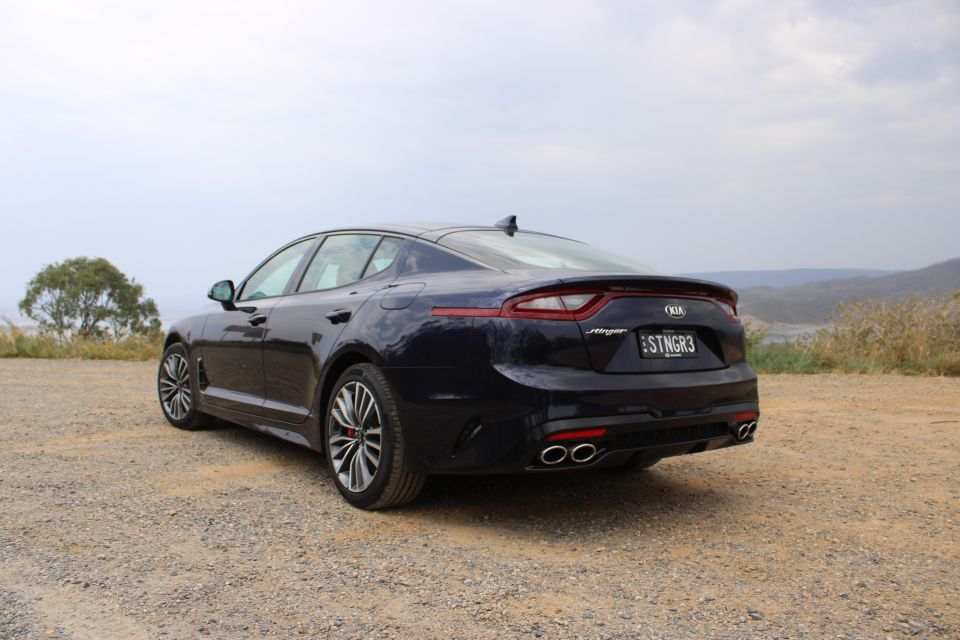
Our tester was the Stinger 330S which, at $50,190 before on-road costs, is the cheapest way to get a Stinger with the more powerful twin-turbocharged V6.
Pricing kicks off at $47,190 before on-road costs for the base 2.0-litre Stinger 200 S, and extends to $64,790 before on-road for the range-topping V6 Carbon Edition.
Buy your new car without the stress. It's fast, simple and completely free.

Great service from Travis and team, second time I have used this business would not hesitate to recommend them to anyone
Craig C.
Purchased a Ford Ranger in Sunshine Coast, QLD
CarExpert helped Craig save thousands on his Ford Ranger, now let us save you on your next new car.
Find a dealThe 330S comes standard with adaptive cruise control, proximity entry with push-button start, paddle shifters, rain-sensing wipers, a six-speaker sound system, power adjustable front seats, and a 7.0-inch touchscreen with Apple CarPlay, Android Auto and satellite navigation.
All six-cylinder Stingers also come with a mechanical limited-slip differential and bigger Brembo brakes.
From the 330S, it’s a great leap to the flagship GT after a model range reshuffle last year removed the mid-range 200Si and 330Si models. The Kia Stinger GT costs an extra $10,600 but adds a raft of luxury goodies that go a long way towards justifying the expense.
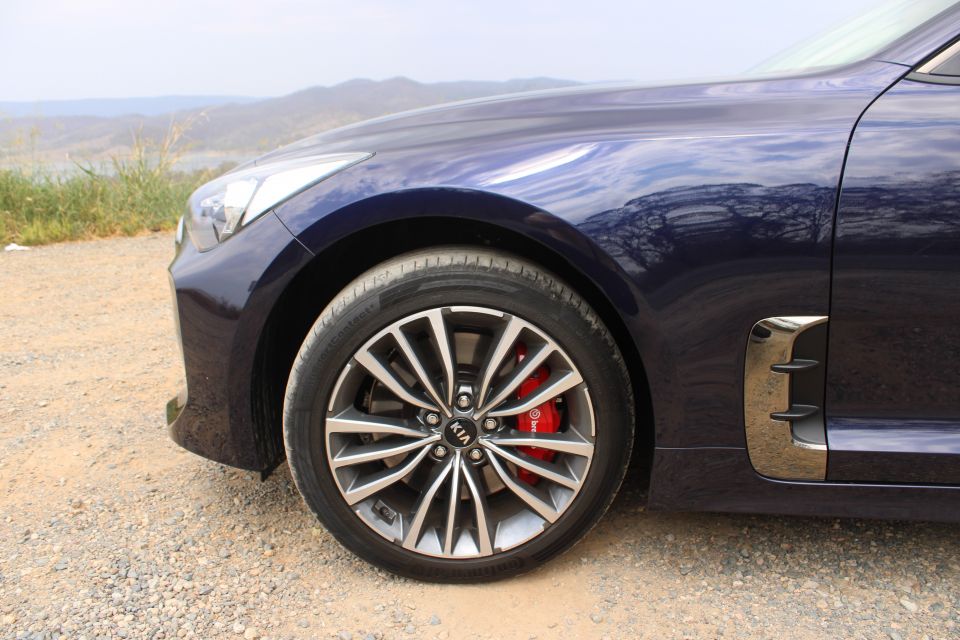
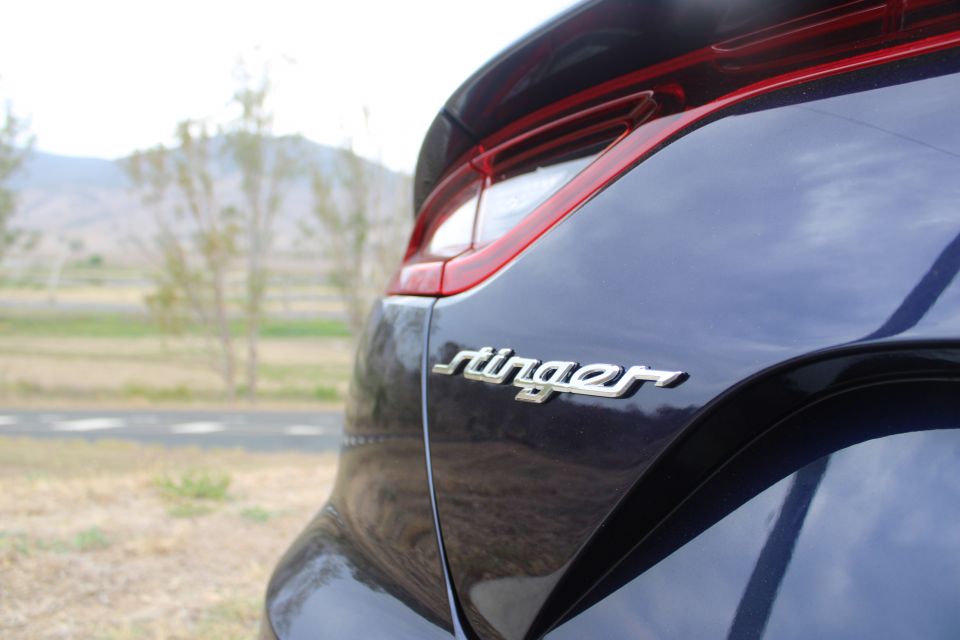
These include a panoramic sunroof, leather seats with heating and ventilation up front, a colour head-up display, wireless phone charging, LED headlights with high beam assist, and a 15-speaker premium sound system.
There’s also additional equipment such as blind-spot monitoring, rear cross-traffic alert, and front parking sensors. Even though the 330Si is the base V6 model with smaller 18-inch wheels, it looks fantastic.
There’s not a line out of place, with one observer even saying it looked like a Jaguar.
You could strip away the non-functional vents on the bonnet and fenders, as well as the trailing arm of the taillights, and still be left with a dynamic-looking car. Those details do add some visual aggression, however, as do the red calipers for the Brembo four-piston brakes.
Like sporty Falcons and Commodores of yore, there’s a vibrant colour palette.
Hichroma Red and Neon Orange are the hero colours and the strangely-named Micro Blue is dazzling, but our tester’s Deep Chroma Blue is the most elegant colour in the range.
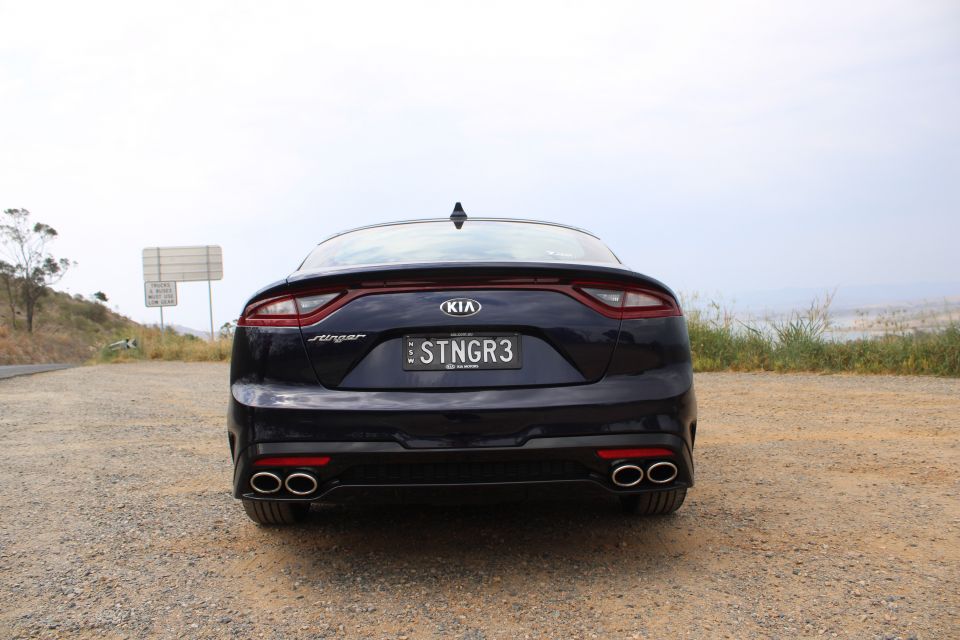

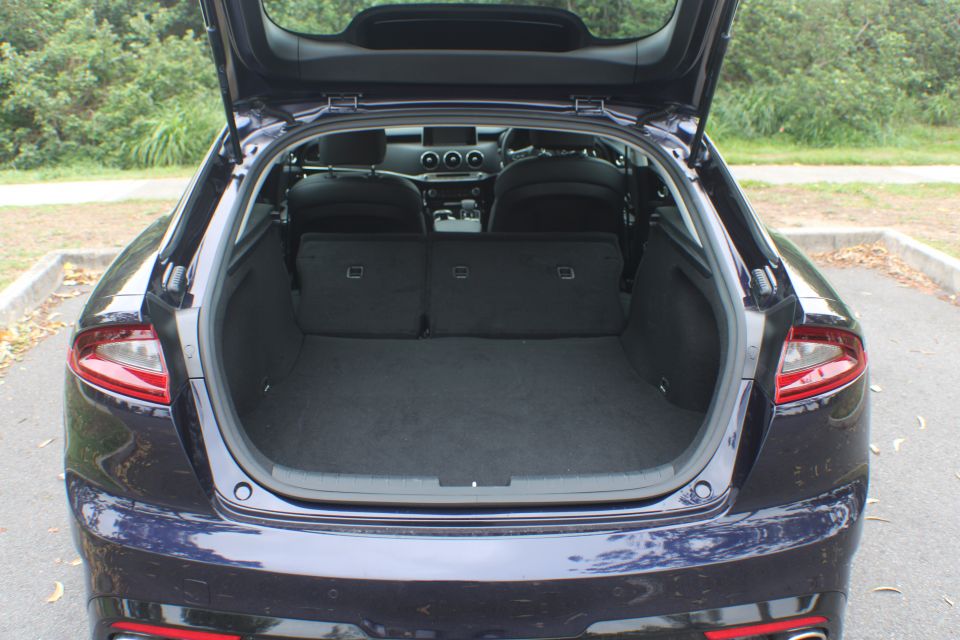
Standard safety kit on the 330S includes autonomous emergency braking with forward collision warning, lane-keeping assist, reversing camera and rear parking sensors.
The Stinger also boasts a five-star ANCAP rating from 2017. It scored 91 per cent for adult occupant protection, 81 per cent for child occupant protection, 78 per cent for pedestrian protection, and 70 per cent for safety assist.
Kia was wise to make the Stinger a hatchback, considering how easy it would’ve been to make it yet another sedan with a sloping roofline and a small boot lid.
The fifth door dramatically aids versatility over a sedan and came in handy when moving a couple of office chairs and some flat-pack furniture. With the seats up, cargo volume is 406L, and folding them 60/40 expands that space to 1114L.
There initially appeared to be an occasional creak emanating from the tailgate – it later turned out to be coming from the boot floor insert containing the space saver spare, but it’s worth keeping an eye out for regardless.
Inside the cabin there’s liberal use of switchgear from the parts-bin, but fortunately it’s the good stuff.
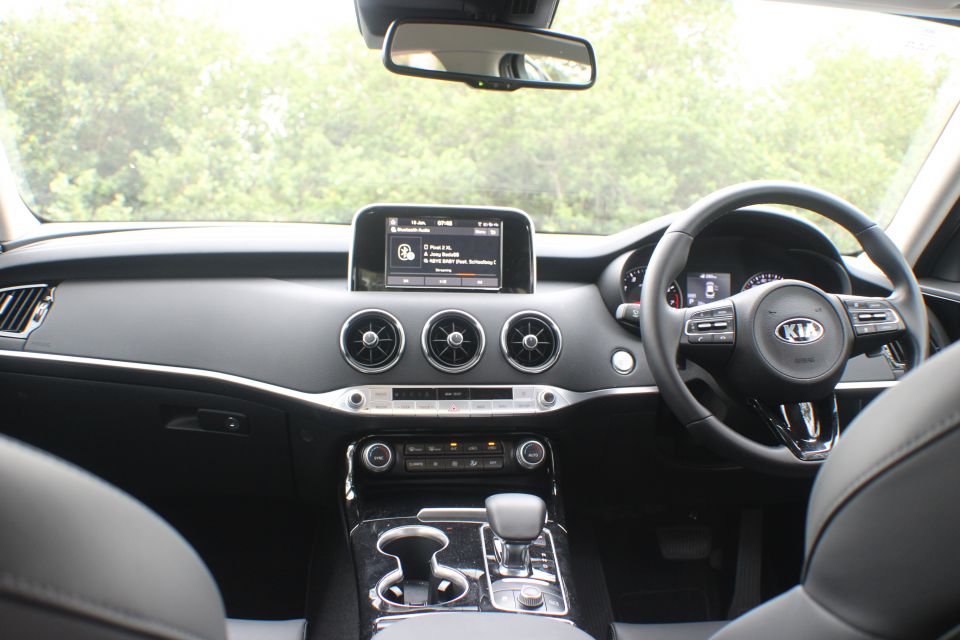
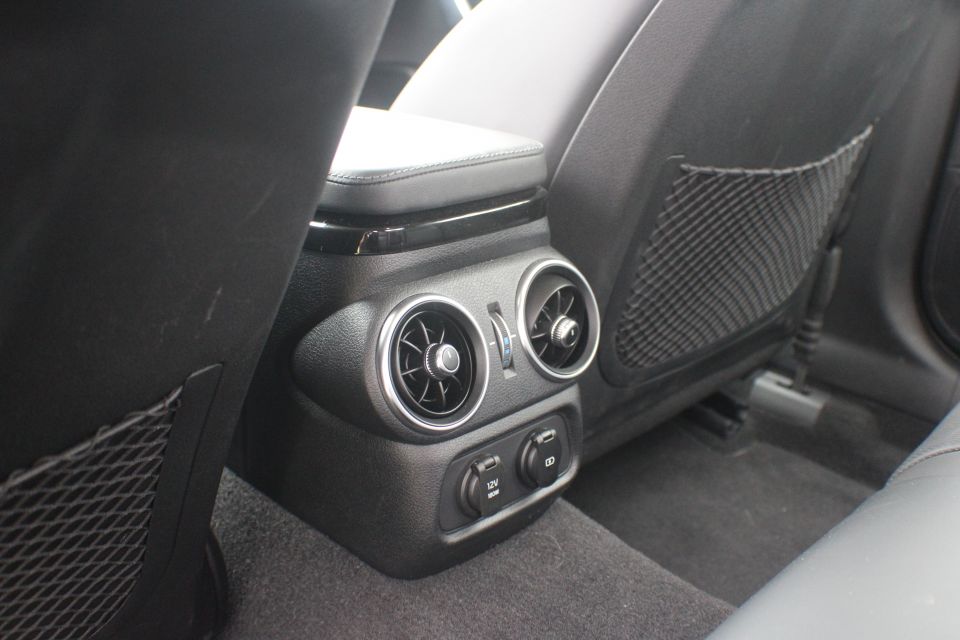
Atop the dashboard is leather-look trim with attractive stitching. Similar trim is used on the door inserts, while soft-touch plastics are used everywhere except the farthest reaches of the dashboard and doors.
To provide necessary contrast in the black cabin, there’s some of Hyundai and Kia’s favourite trim, silver plastic, as well as some piano black pieces.
It works, the overall look appearing sufficiently upscale for a $50,000 car. The circular air vents are also attractive, and reminiscent of a Mercedes-Benz.
The front seats are the highlight of an attractive cabin. They’re wonderfully supportive with thick bolstering, including side bolsters that hold you close and don’t let go. The headrests are comfortable, with a concave shape that allows you to sink your head in.
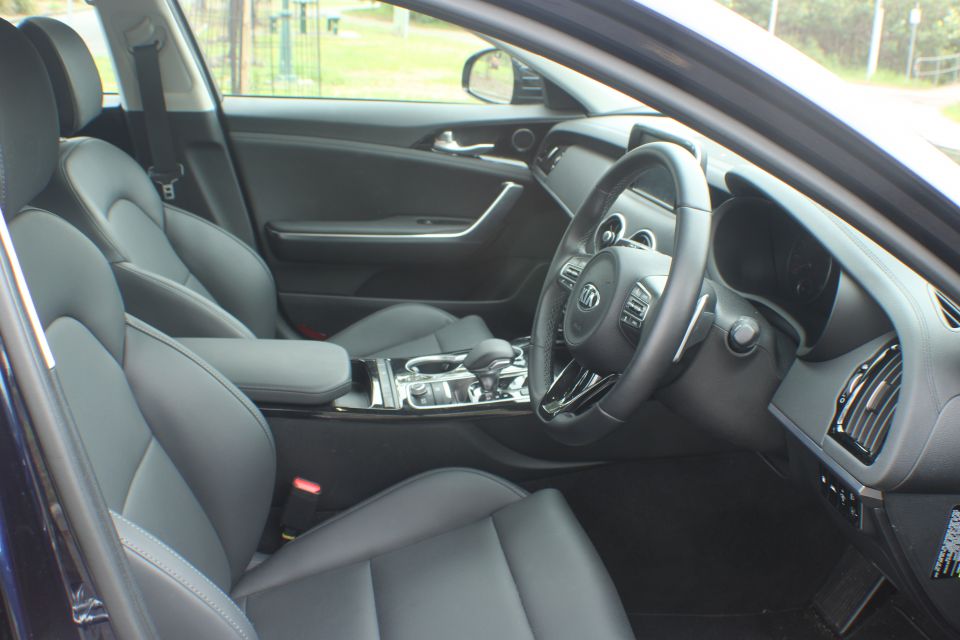
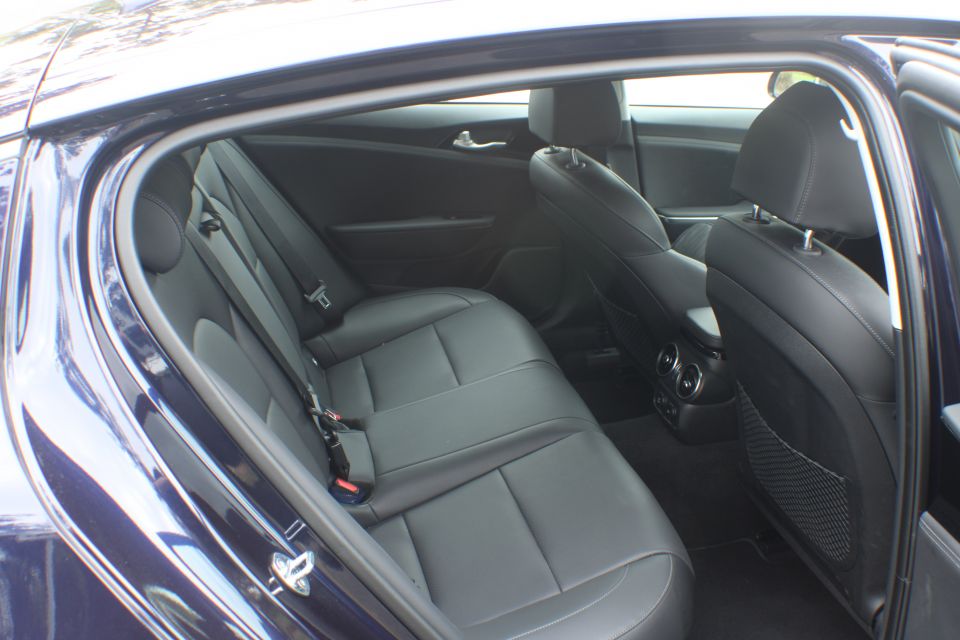
Even after hours of driving, the front seats remain comfortable. Though they lack the heating and ventilation of the GT, they’re power-adjustable – eight-way for the driver, six-way for the passenger.
GT and GT-Line Stinger seats can also be had in a rich burgundy leather.
330S seats are trimmed in ‘Sports Premium’ trim, which may or may not have actually been a cow at some point. Regardless, it’s comfortable.
Though the Stinger is lower than some of its rivals, not to mention all-conquering SUVs, it isn’t uncomfortable to get in and out of. You’ll need to watch your head stepping into the rear seat but once you’re there, you leg-, head- and shoulder room is ample.
The rear bench includes three anchor points and two ISOFIX points for child seats.
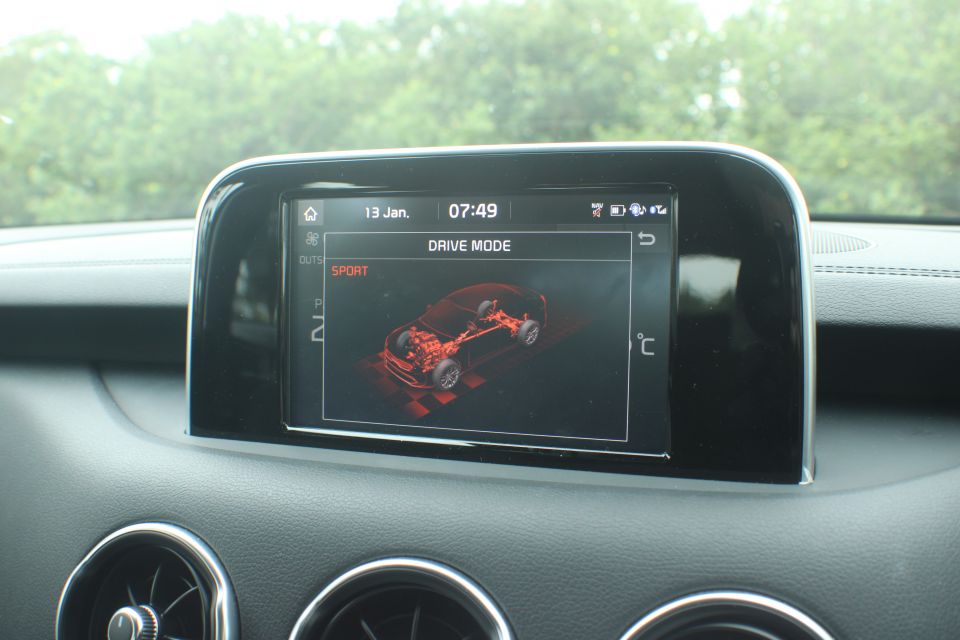
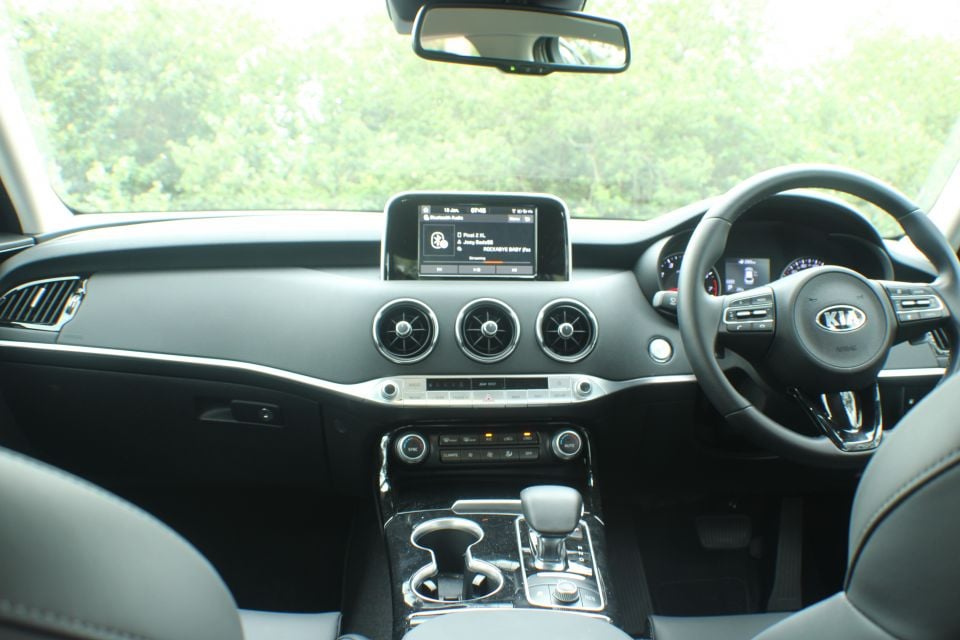
There’s a USB outlet and a 12V power outlet at the end of the centre console, as well as round vents like those up front. The front seat backs are finished in hard plastic, but feature storage nets.
Each of the doors has a bottle holder big enough for a 600ml bottle.
If there’s one issue with the interior, it’s the touchscreen. Not the system itself – Kia infotainment systems are consistently good, featuring an attractive interface and excellent usability.
The issue is with its size and appearance. Measuring 7.0 inches and surrounded by a thick plastic bezel, it seems undersized for its position perched prominently on a ledge on the dashboard. GT models have an 8.0-inch unit without the thick bezel.
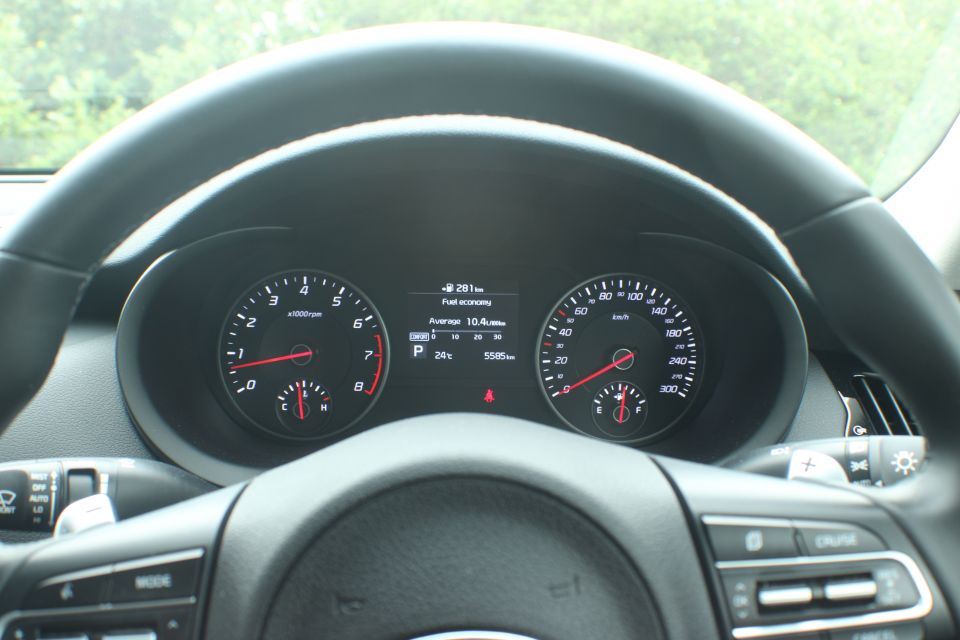
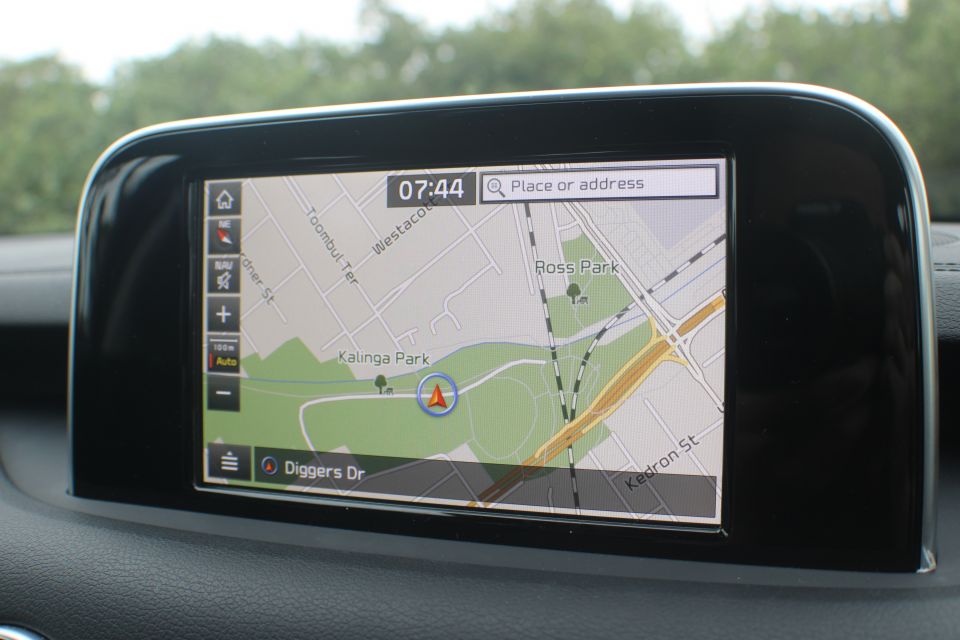
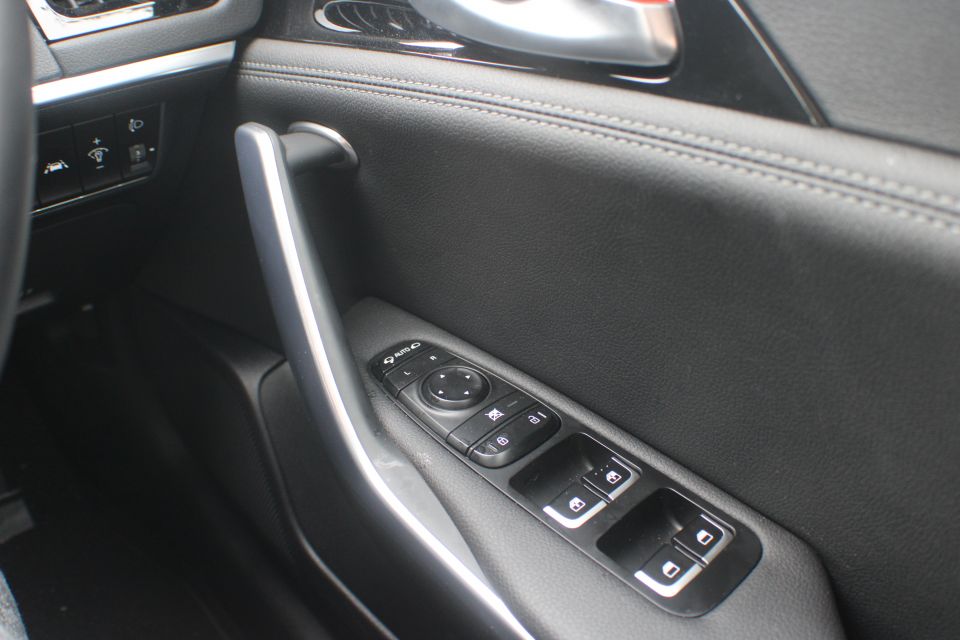
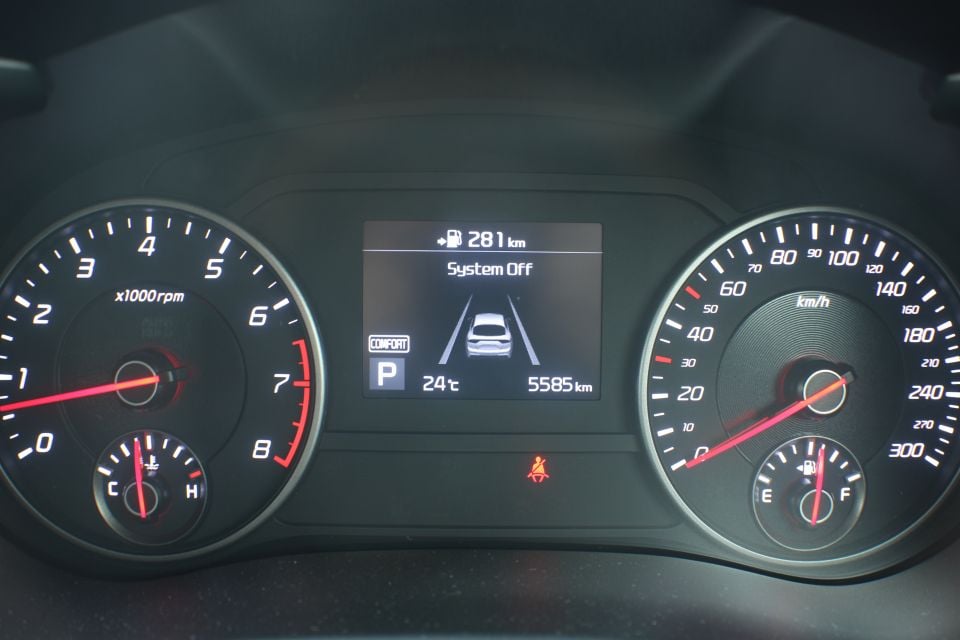
It’s understandable Kia would want to give buyers a reason to shell out the extra $10,000 for the GT, but 8.0-inch infotainment systems are standard in cheaper Kia models like the Cerato.
The Stinger 200S and GT-Line use a turbocharged 2.0-litre four-cylinder engine with 182kW and 353Nm, while the 330S and GT use a twin-turbocharged 3.3-litre V6 with 272kW of power and 510Nm and torque.
Both engines are mated exclusively to an eight-speed automatic transmission.
Kia quotes a 0-100km/h time of just 4.9 seconds for the V6 models. Yes, the Stinger is properly quick.
The 330S foregoes the adaptive dampers of the range-topping GT, instead using passive dampers.
There are adjustable drive modes though, controlled with a small knob near the gearshift, though they only alter throttle response and steering. Putting the Stinger in Sport mode doesn’t significantly change steering feel and weight.
It does, however, make the Stinger quicker off the line.
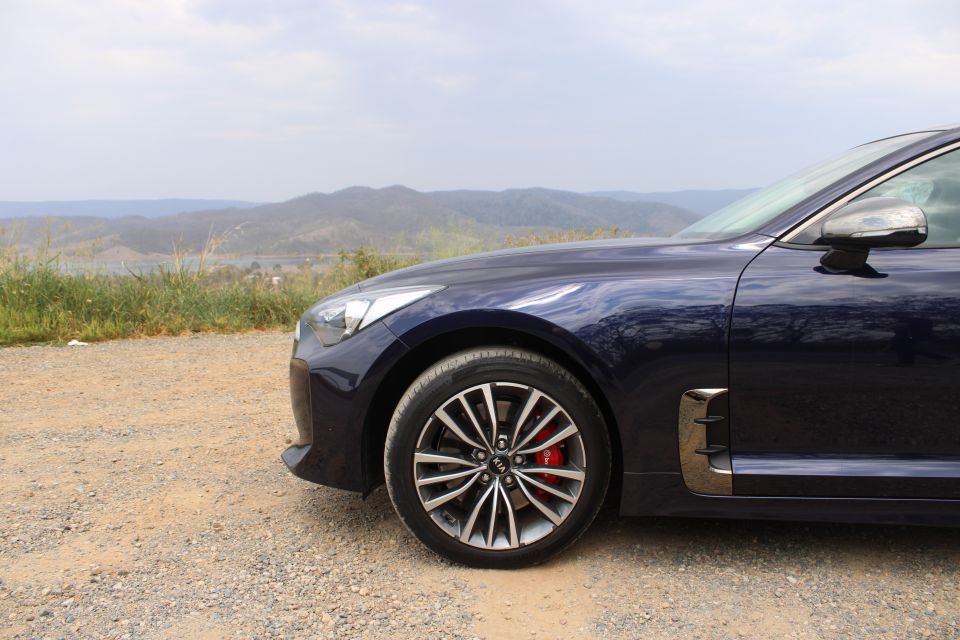
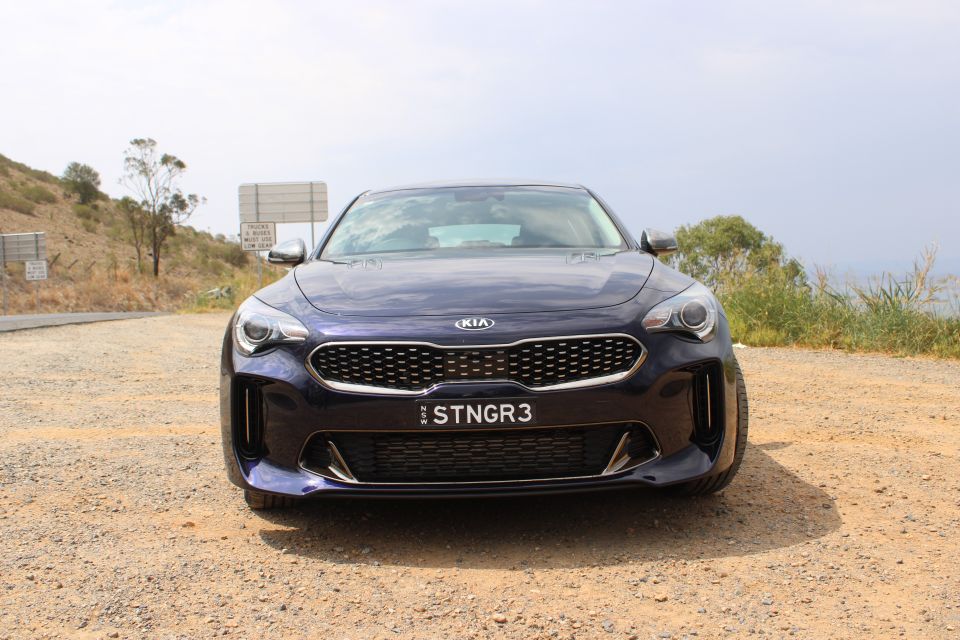
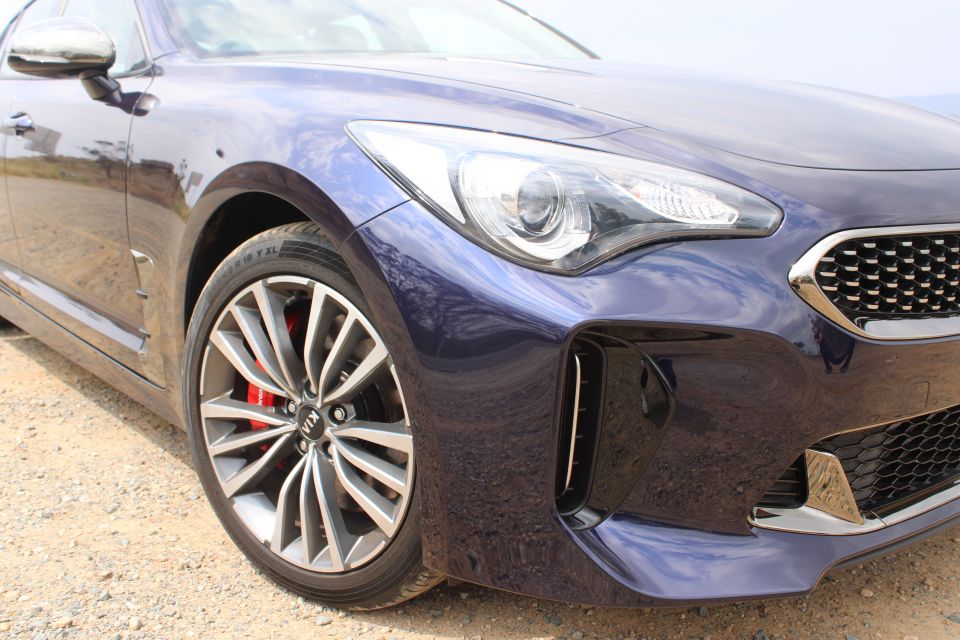

It also allows for some delightful rear-wheel drive theatrics, the rear wheels breaking loose before the traction control smoothly reins them back in.
It really makes the car feel alive, and you may find it hard to resist the temptation to be ‘that guy’ squealing away from a stop. The biggest issue with this package in comparison to the GT is the narrower rear tyres – 225mm wide versus 255mm, plus the standard inclusion of Michelin Pilot Sport 4 instead of Continental tyres.
There’s an Eco mode that dulls throttle response to aid fuel economy, while Smart mode shifts between Comfort, Eco and Sport based on your driving habits. You can also select your own combination in Custom mode.

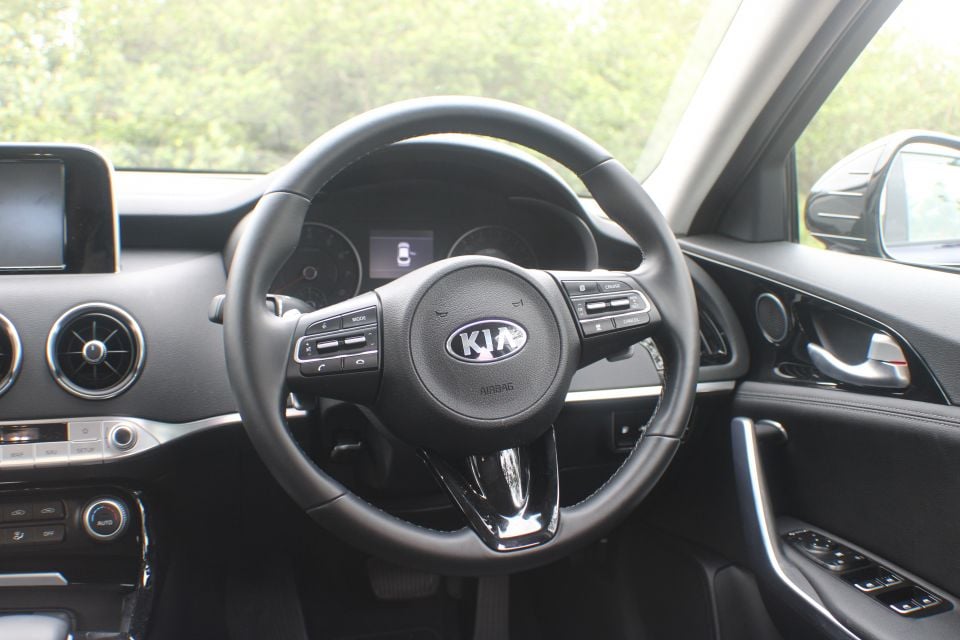
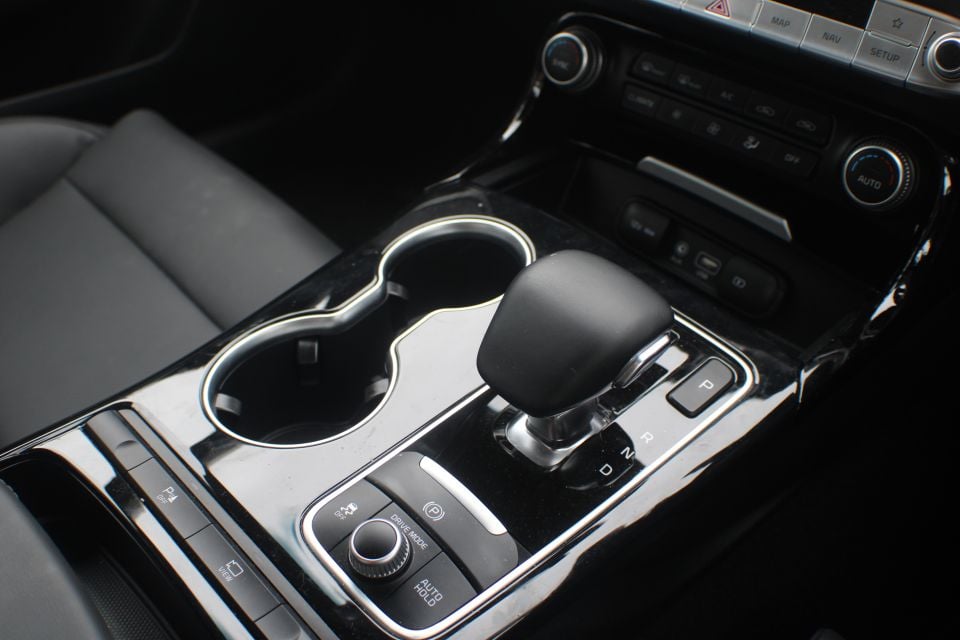
Perhaps the most impressive aspect of the Stinger’s dynamics is just how adeptly it can go from one extreme to another. Whether on the open road or cruising around town, the Stinger is a comfortable cruiser and extremely easy to drive.
The eight-speed automatic transmission shifts smoothly and almost imperceptibly.
There are paddle shifters at the ready but you rarely feel the need to intervene, the automatic never being caught out of step even when being driven hard along twisting mountain roads.
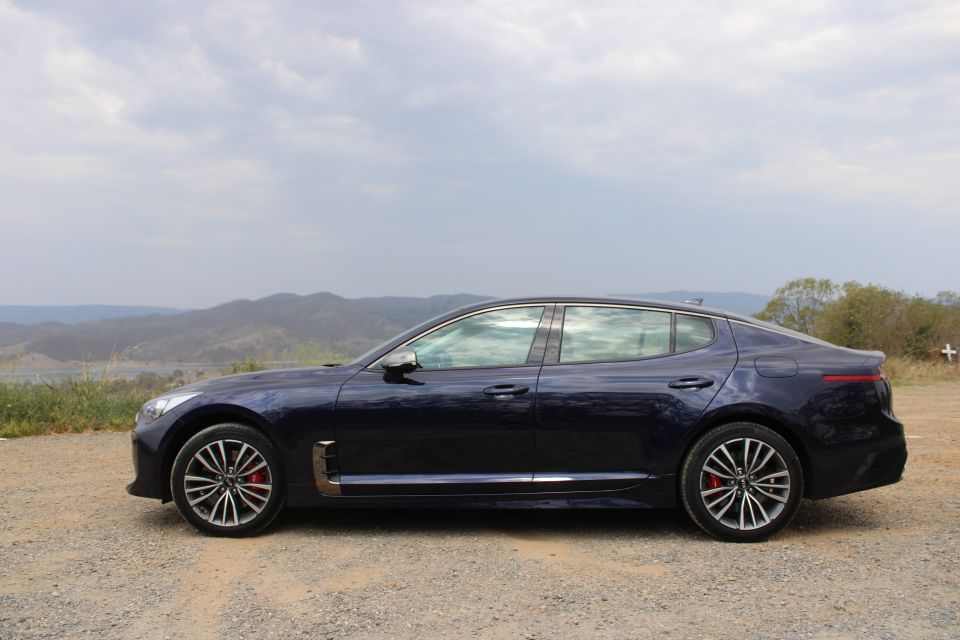
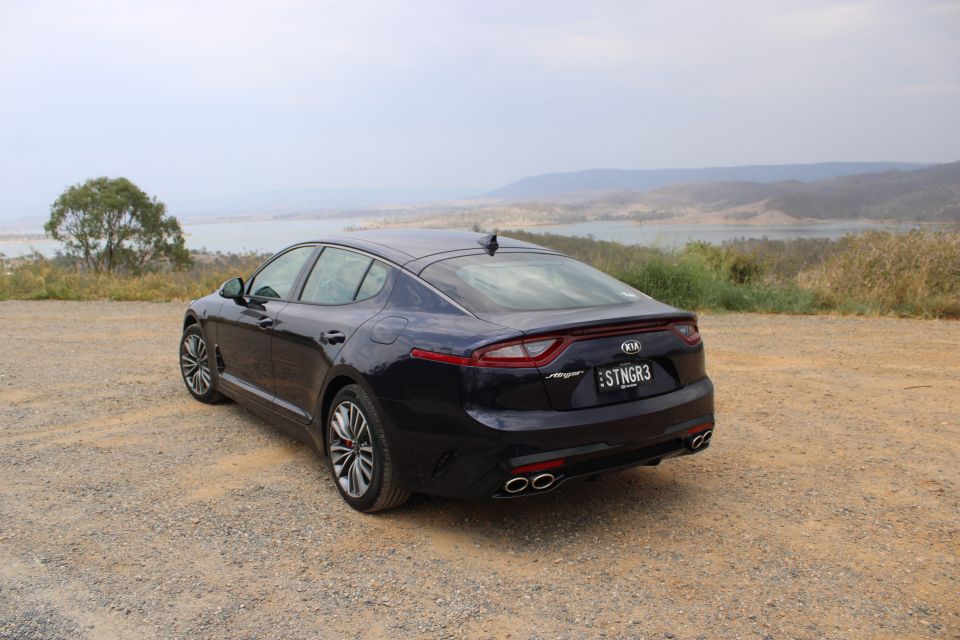
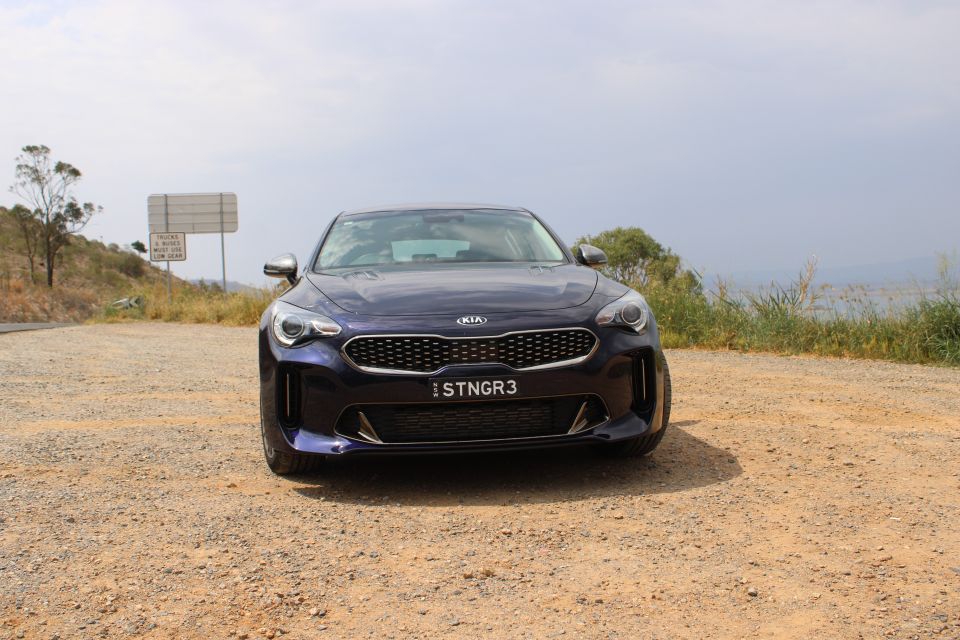
With the 330S’s passive dampers, the Stinger’s ride is firm but never uncomfortable, while body control is excellent. You’ll feel some bumps, but you’ll also feel the road.
You’ll also hear the road, as tyre noise can sometimes be prominent considering how little engine noise the Stinger makes on the road. Yes, if there’s one thing the Stinger is missing, it’s some aural drama.
The car is simply too quiet for something with so much power and so many vents and scoops. Come on Kia, it’s called the Stinger.
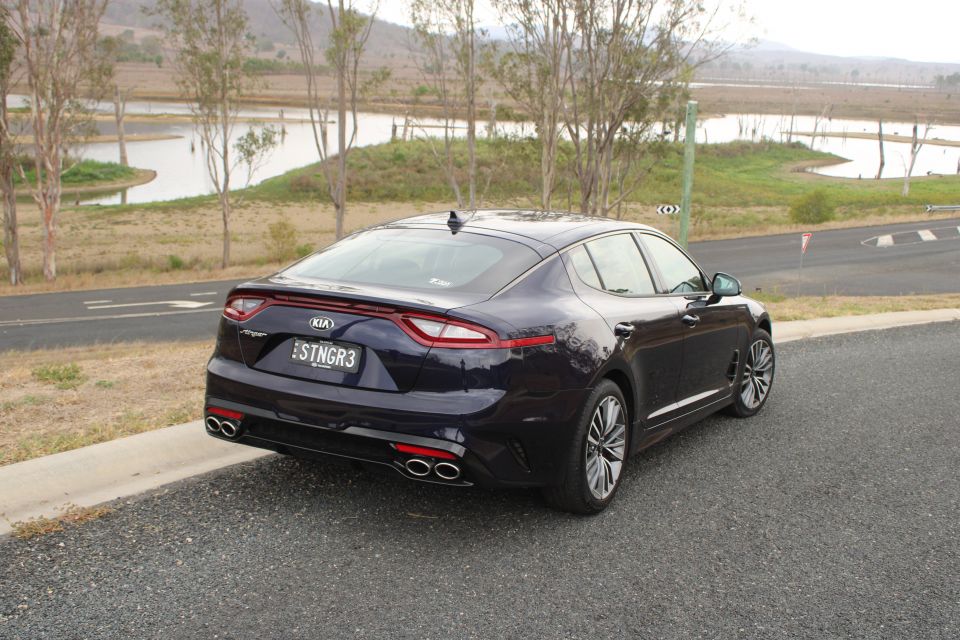
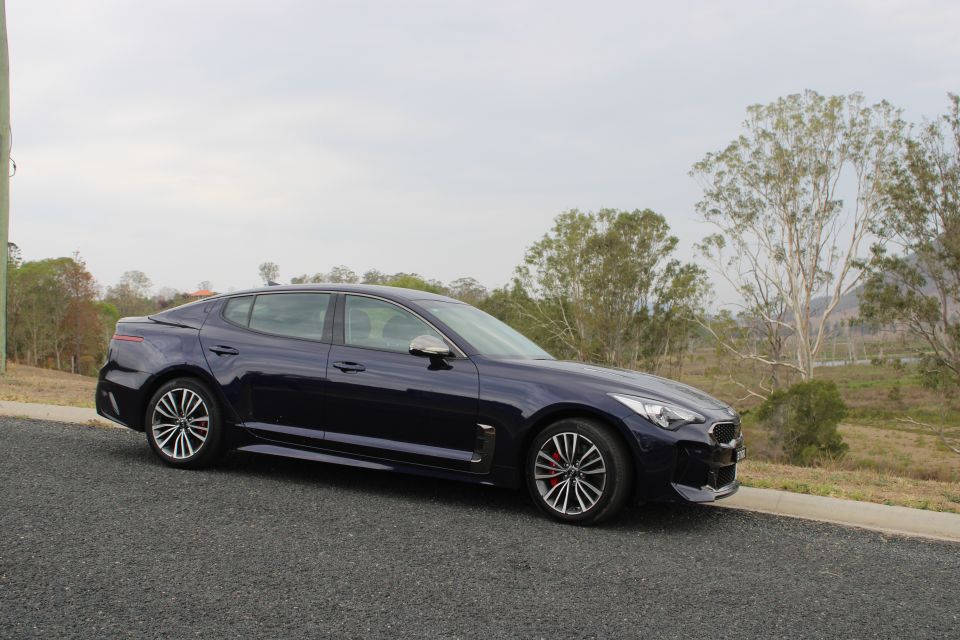
There is a dealer-fitted bi-modal exhaust option available but it’s pricey. Kia’s lane-keeping assist is less prominent in the Stinger than in other Kias, probably due to its heavier, more talkative steering.
In mostly urban driving during a week, the 330S recorded an average fuel economy reading of 14.1L/100km.
A weekend of highway driving, twisting mountain roads, and some stop-start traffic brought that down to 10.4L/100km.
Kia claims urban and highway averages of 7.5L/100km and 14.9L/100km, respectively, and a combined average fuel consumption of 10.2L/100km.
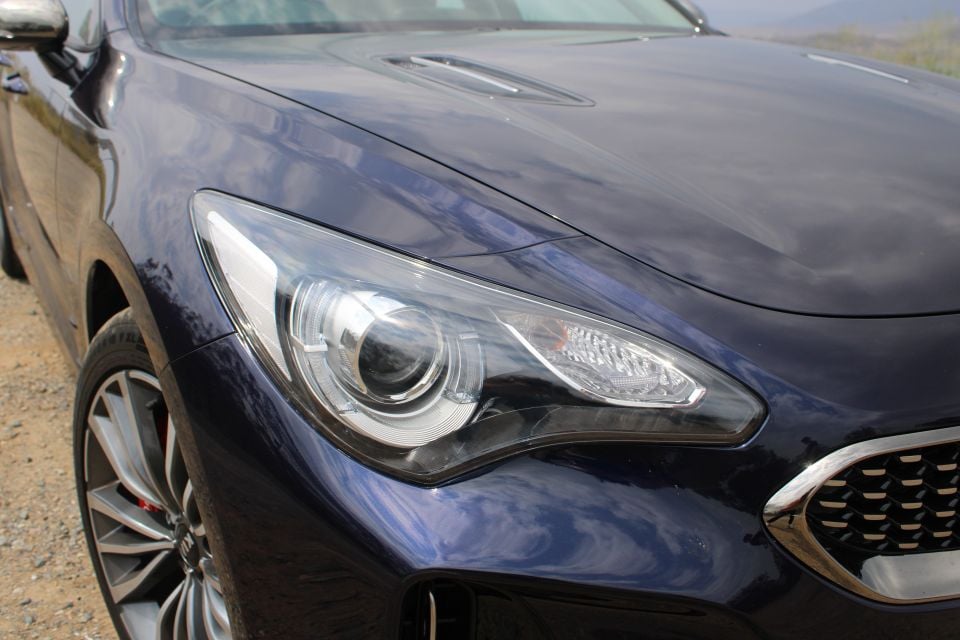
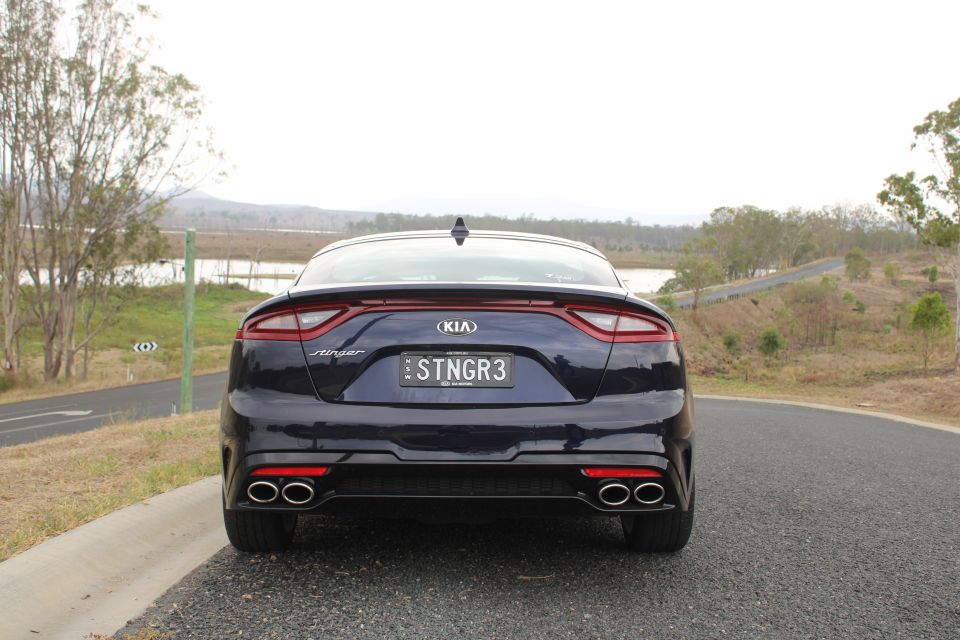
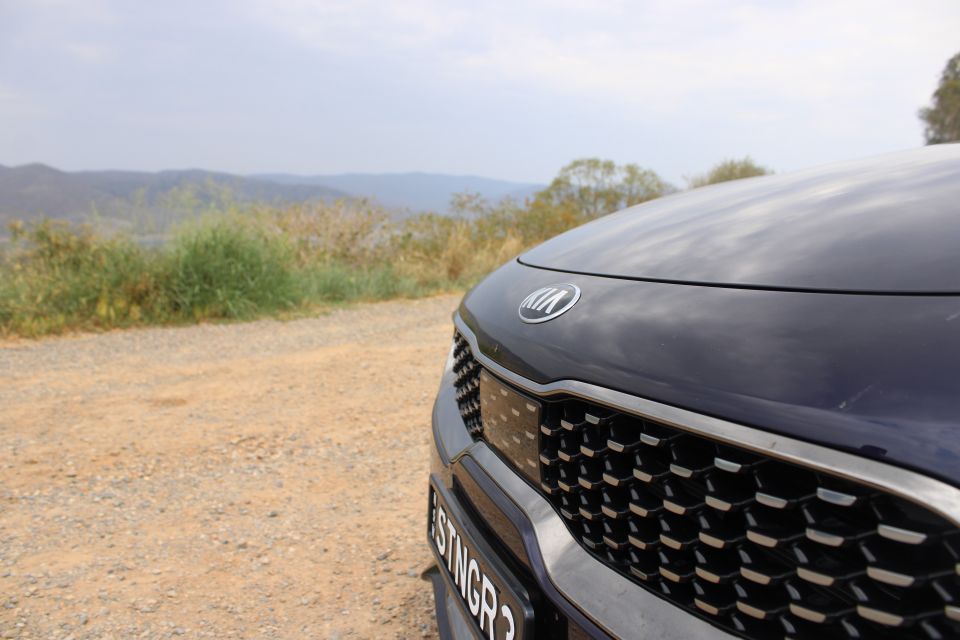
You can use 91RON fuel in the Stinger but Kia recommends 95RON or higher, which is what we used.
In addition to its excellent seven-year, unlimited-kilometre warranty, Kia offers capped price servicing over a seven-year or 70,000km period, whichever comes first. The total cost works out to be $4068, which averages out at $581 per service.
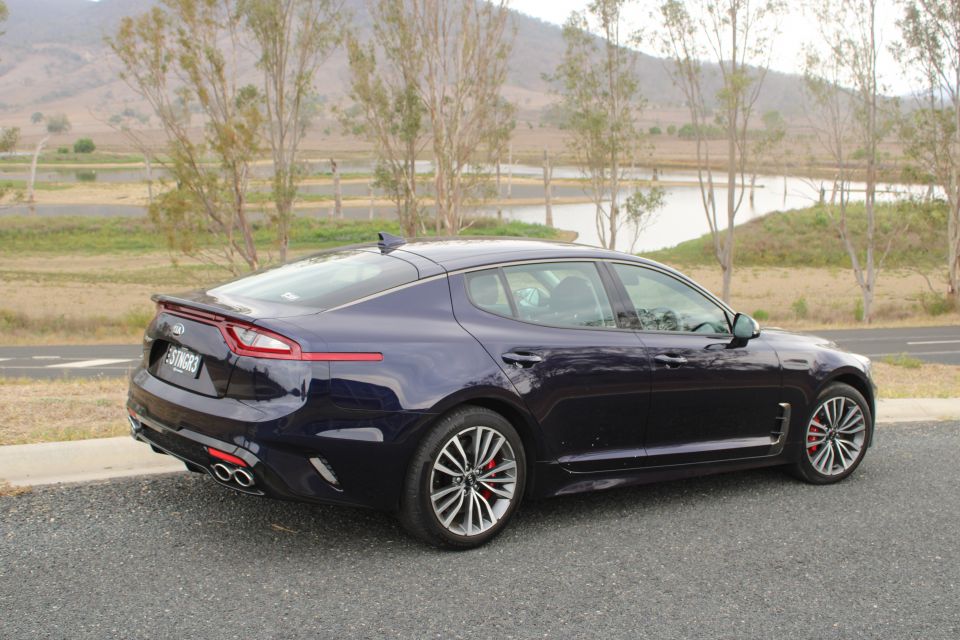
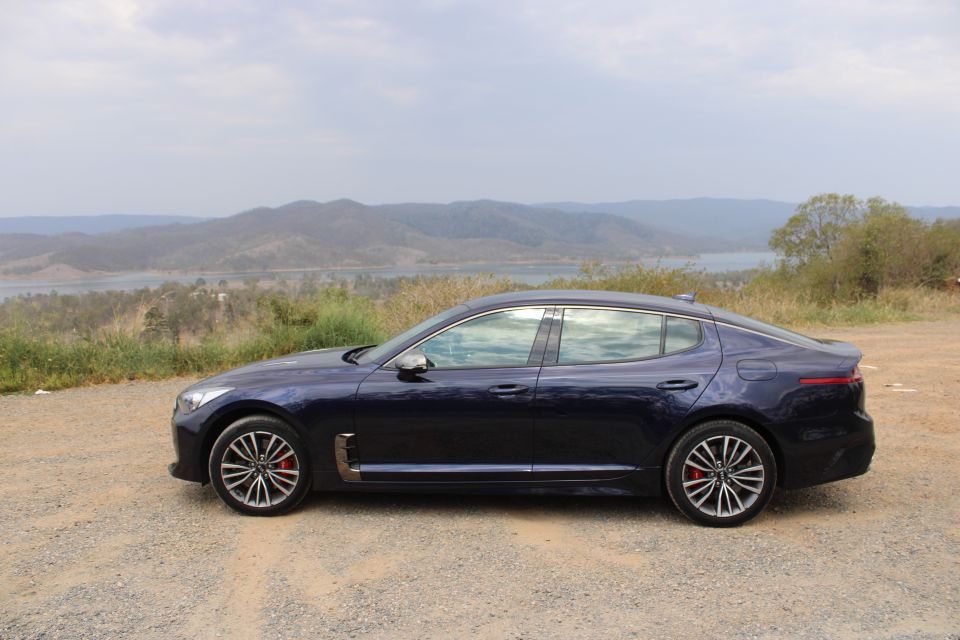
Where expert car reviews meet expert car buying – CarExpert gives you trusted advice, personalised service and real savings on your next new car.
So, is the Stinger a good choice to replace your Falcon or Commodore or coax you away from an entry-level German?
Yes.
The Stinger isn’t dynamically perfect. It could use just a touch more steering feel, for example, but you won’t find anything with this much power and poise at this price.
To get a German car with a sub-five second 0-100km/h time, the least you’d pay would be $63,990 before on-road costs for a BMW M135i xDrive, which is around two sizes smaller.
A C-Class or A4 with this amount of power would set you back around $100,000.
You could look for a run-out deal on one of the final examples of an Infiniti Q50 3.0 Pure. It, too, has a twin-turbocharged V6 but, with 224kW and 400Nm, it’s well down on power and torque compared to the Stinger.
With the Stinger, Kia has developed a large hatchback with an excellent duality of purpose. It can be both a comfortable commuter and a back-road bandit.
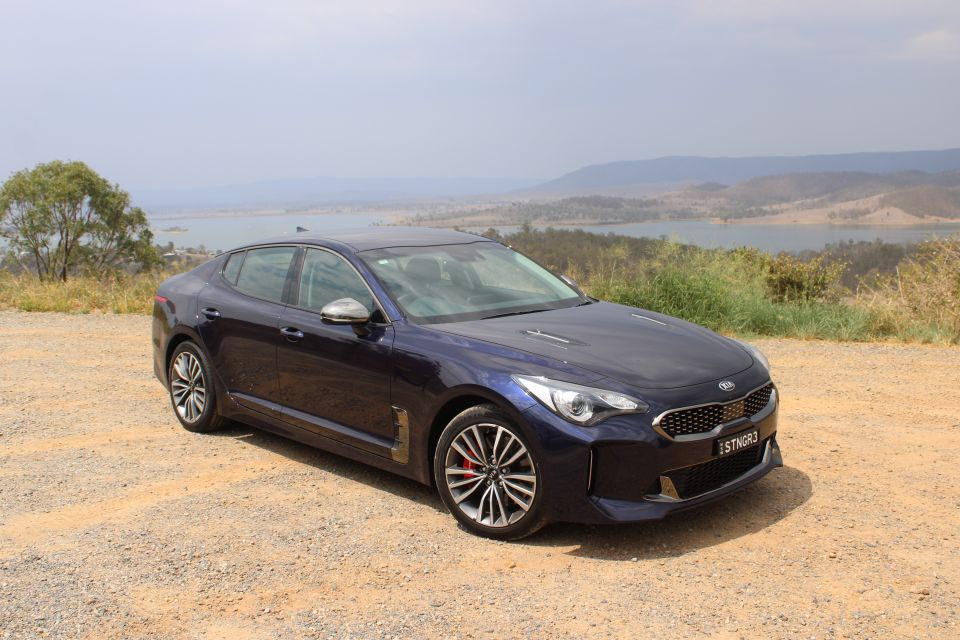
Unfortunately, the Stinger arrived at an inauspicious time, with medium and large car sales fading.
The Stinger needs to do well here and, even more importantly, in the US market as it’s destined to be a niche player in conservative China and badge-conscious Europe.
The good news is it’d be worth recommending even if it did have direct rivals.
Even with its $10,000 premium, the GT makes a compelling case considering how many features it adds. But the 330S is no miser and, most importantly, it’s no slouch.
If you’re coming out of a VF Commodore or even a Mercedes-Benz C200 and you still feel unsure about buying something with the Kia badge, get over it.
If you want the best sports sedan – sorry, hatchback – at this price point, you have to choose the Stinger.
Where expert car reviews meet expert car buying – CarExpert gives you trusted advice, personalised service and real savings on your next new car.
William Stopford is an automotive journalist with a passion for mainstream cars, automotive history and overseas auto markets.


Andrew Maclean
57 Minutes Ago
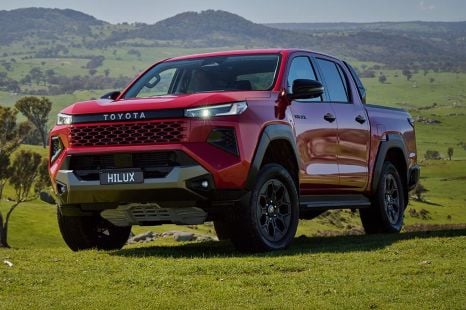

Damion Smy
9 Hours Ago
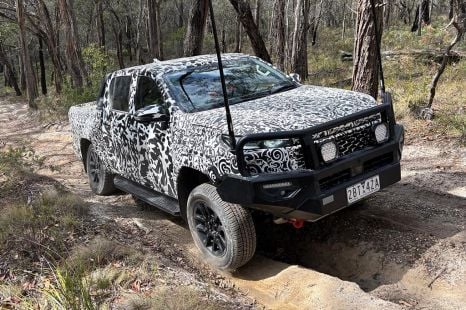

Damion Smy
9 Hours Ago
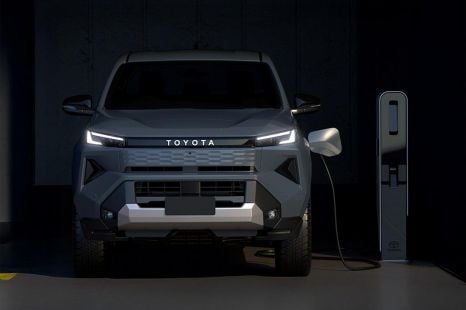

Damion Smy
9 Hours Ago
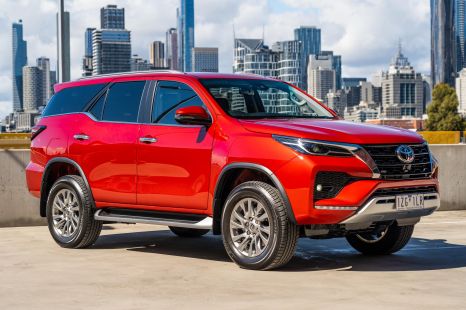

Damion Smy
9 Hours Ago


Damion Smy
9 Hours Ago